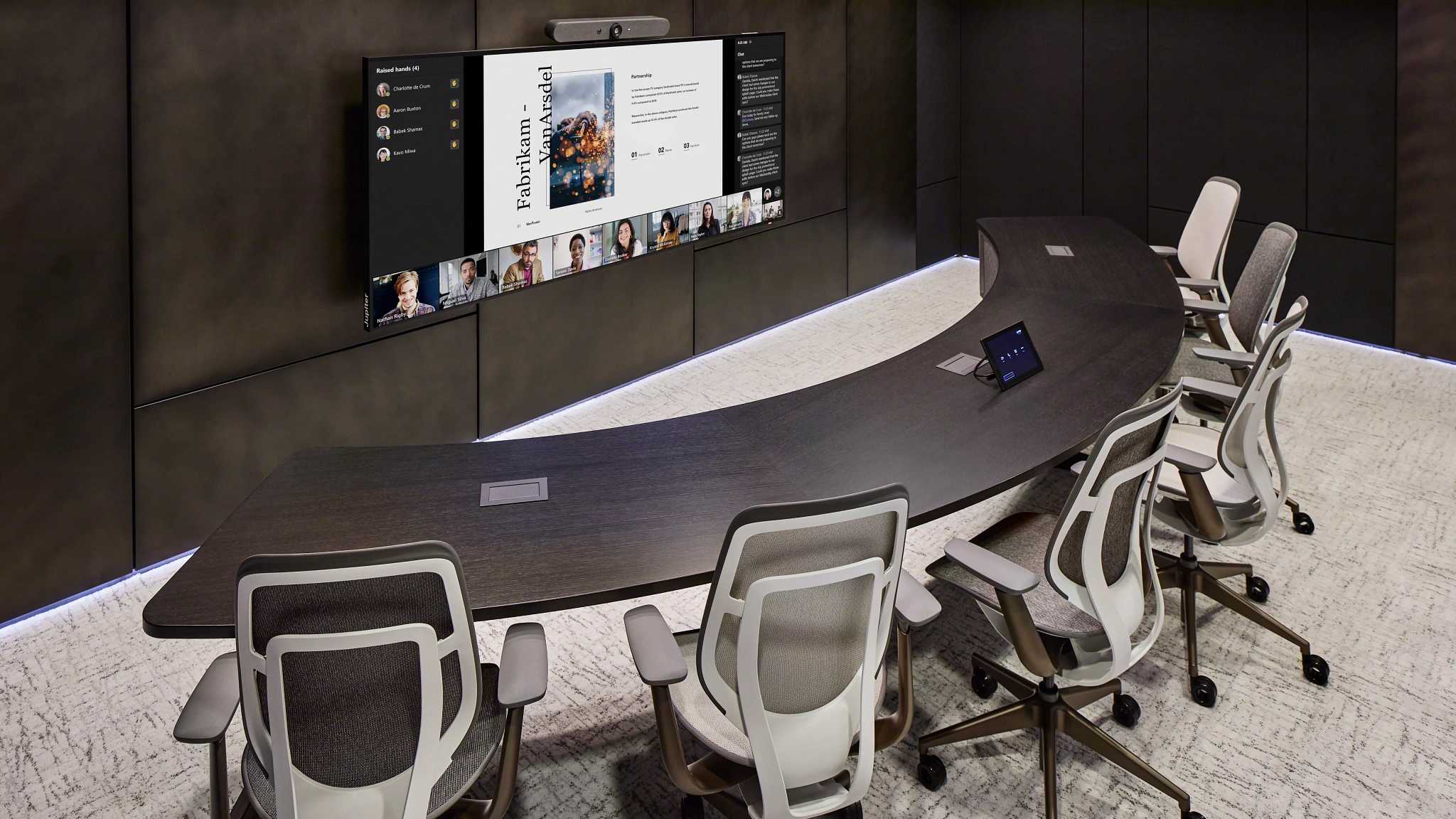
Designing for “Phygital” Workspaces
As some employers return to the office while others have transitioned to be either fully or partially remote, a growing design trend that was a big conversation starter at this year’s NeoCon is the need to design for the “phygital” workspace. The term “phygital” combines the physical and digital world into one seamless work environment and goes hand in hand with the new hybrid workforce. By providing solutions that integrate technology and acoustical solutions it allows employers to interact better with mixed presence teams.
Manufacturers are continuously designing products to support this new need for digital work. At this year’s Neocon event, Steelcase showcased the Hybrid Collaboration Table which is a conference table designed and tested to specifically support video calls. It positions the camera angle and monitor precisely to ensure all in office employees and remote workers can be seen and heard clearly. Another Steelcase product, the Flex Back Wrap is a mobile screen designed to be used both as a privacy barrier while it can also be positioned behind your workstation as a neutral backdrop for video calls. Mobility is another key factor in this new type of design. Gone are the days where workstations and conference areas are fixed for one specific use. Now, the need to move furniture around to support a variety of work environments is the main goal. Pods are also one of the best examples of products that cater to video calls, privacy and collaborative workspaces. Another small but impactful change we’ve seen in terms of design is the decline in a need for paper filing storage. Storage is still necessary and needed in work environments, however since most work-related information is now filed digitally as opposed to physically there is not as much of a need for a large amount of paper filing storage systems.
The transition to a digitally focused work environment has been happening for the last decade or so but it has changed even more drastically just within the last few years with the need to communicate with remote workers and to design for digital environments. It will be interesting to see what other workplace solutions will be designed to cater to these changes and what new office trends we’ll be seeing.